Croeso i ddiweddariad y mis hwn ar yr hyn sydd yn wybren y nos ar gyfer mis Awst.
Fe fydd tywyllwch seryddol yn dychwelyd i’r rhan fwyaf o’r DU y mis hwn sydd yn golygu y bydd yr wybren yn wirioneddol ddigon tywyll ar gyfer y rhai sy’n frwdfrydig am y gofod pell. Yng Nghanolbarth Cymru, mae gwir dywyllwch yn digwydd rhwng hanner nos a 2.30yb ar ddechrau’r mis ac amser mwy parchus, 10.12yh a 4.16yb ar y diwedd. Bydd hyn yn amlwg yn cael ei rwystro gan bresenoldeb y Lleuad ar unrhyw noson bendodol, felly i geisio ddod o hyd i’r wybren dywyll hwnnw, cadwch lygad barcud yma ar godiad a machlud y Lleuad.
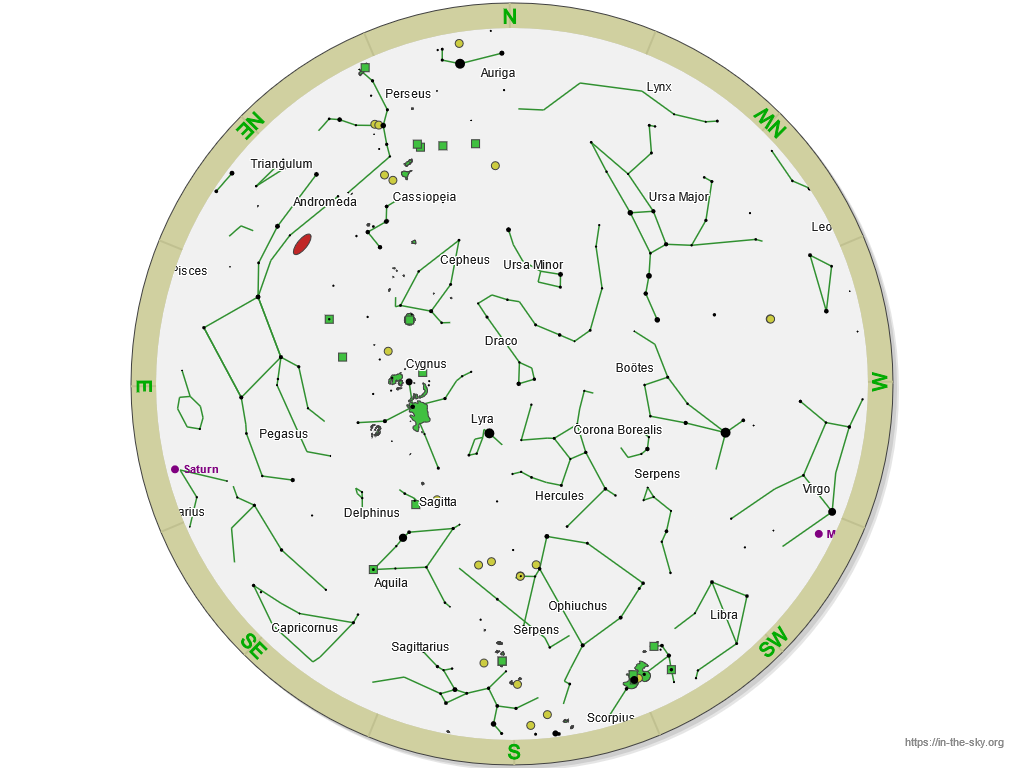
Mae cytserau’r Alarch a Thelyn Arthur dal yn y lle gorau yn wybren y nos am 10yh. Mae’r Saethydd yn gorwedd yn uniongyrchol ar y gorwel deheuol. Mae Boötes gyda’i seren oren lachar Arctwrws, yn symud tua’r gorllewin.
Tua’r dwyrain, mae cyd-gytserau Pegasws ac Andromeda yn gorwedd o dan Lys Dôn sydd ar ffurf w, a chytser ar ffurf tŷ Seffews, gyda Perseus a’r Arth Fawr yn goruchafu’r gogledd. Mae’r Ddraig wedi’i lleoli’n uchel ar y anterth (sef y darn o wybren sydd yn uniongyrchol uwch eich pen).
Fe ddigwydd y Lleuad Newydd ar y 4ydd o Awst a’r Lleuad Lawn ar y 19eg o Awst.
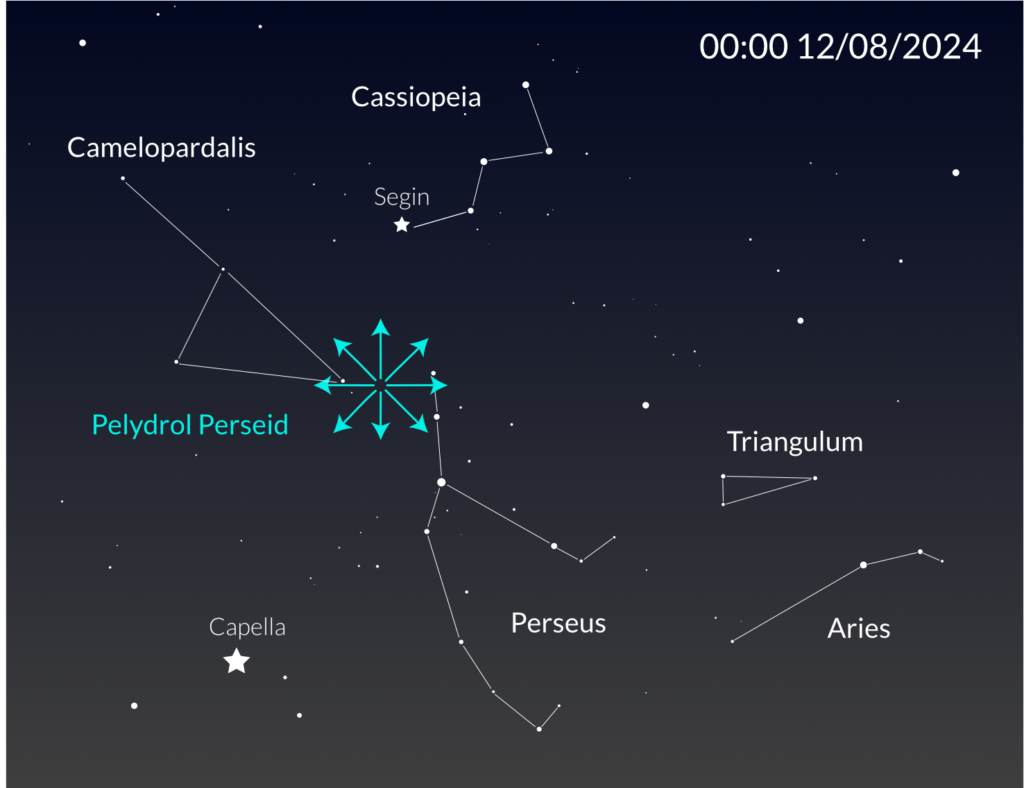
Cawod o Sêr Gwib Perseid
Mae Cawod o Sêr Gwib Perseid ar ei hanterth ar noson y 12fed o Awst ac yn oriau mân y bore ar y 13eg o Awst. Credir mai hwn fydd y digwyddiad cawod o sêr gwib mwyaf ysblennydd y flwyddyn, gan gynnwys y nifer uchaf o sêr gwib yr awr, oddeutu 100. Daw’r malurion o’r deunydd gweddilliol o gomed Swift Tuttle sydd yn llosgi yn ein hatmosffer. Tarddodd y pelydr o’r cytser Perseus, ond mae wedi symud yn eithaf diweddar i ardal Camelopardalis. Fe fydd y Lleuad yn 51% llawn ond yn machlud tua 11yh. Ymunwch â Thîm Wybren Dywyll Cwm Elan ar y 12fed o Awst lle fyddwch mewn cwmni da er mwyn gwylio Cawod Sêr Gwib Perseid ar ei hanterth. Fe fydd gennym delesgopau wrth law er mwyn i chi allu cael taith o gwmpas trysorau disglair y nos.
MAE HWN YN DDIGWYDDIAD SY’N DDIBYNNOL AR Y TYWYDD felly archebwch le yma
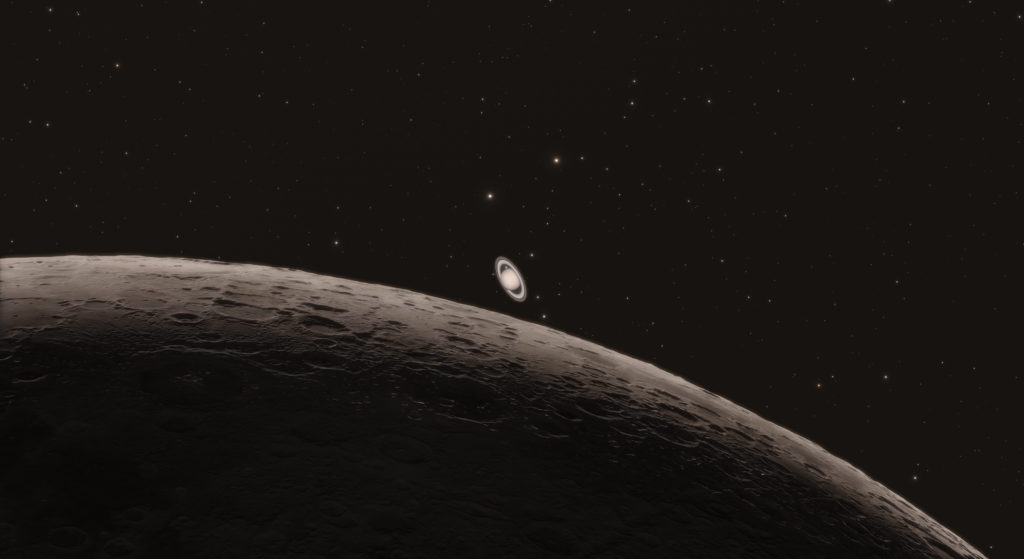
Argeliadau’r Lleuad a’r Blaned Sadwrn
Ar fore’r 21ain o Awst, fe fydd y Blaned Sadwrn yn agosáu at y Lleuad ac yn mynd tu ôl iddi. Fe allwch fwynhau gwylio dyfodiad y blaned nes iddi fynd tu ôl i’r Lleuad oddeutu 4.35yb ac yn ymddangos o’r pedrant dde isaf oddeutu 5yb. Mae’n werth codi’n gynnar er mwyn gweld y digwyddiad prin hwn – y tro diwethaf i hyn ddigwydd oedd yn 2007.
Delwedd: Artists impression, ESO/Nico Bartmann/spaceengine.org
Messier 57 – Y Nifwl Modrwy
RA 18h 53m 35s | Dec +33° 1′ 45″
I’r rhai ohonoch â thelesgop gydag agorfa sydd yn fwy nag 8 modfedd, mae’r Nifwl Modrwy yn werth astudio. Wedi’i lleoli yng nghytser Telyn Arthur (Lyra), fe allwch ei darganfod wrth ddefnyddio’r cyfesurynnau uwchben neu ddefnyddio dull megis hercian sêr.
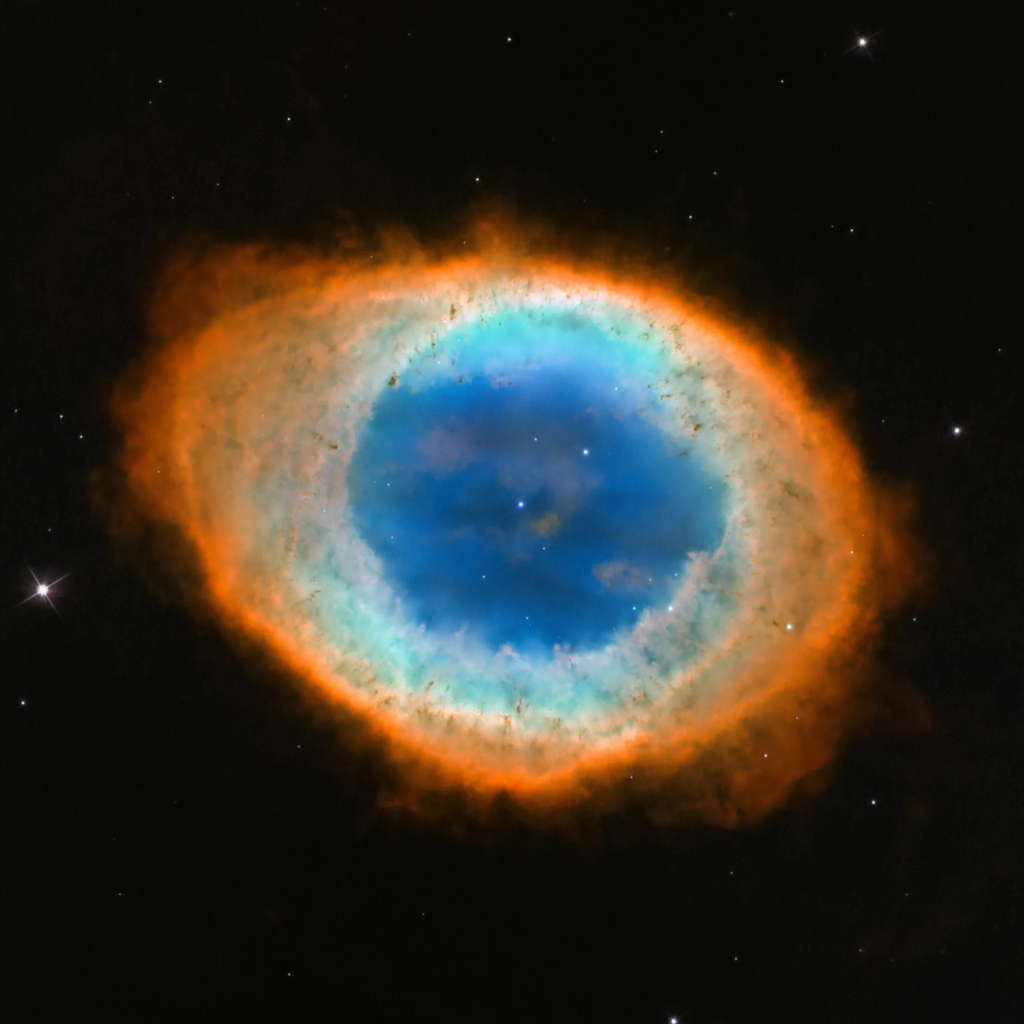
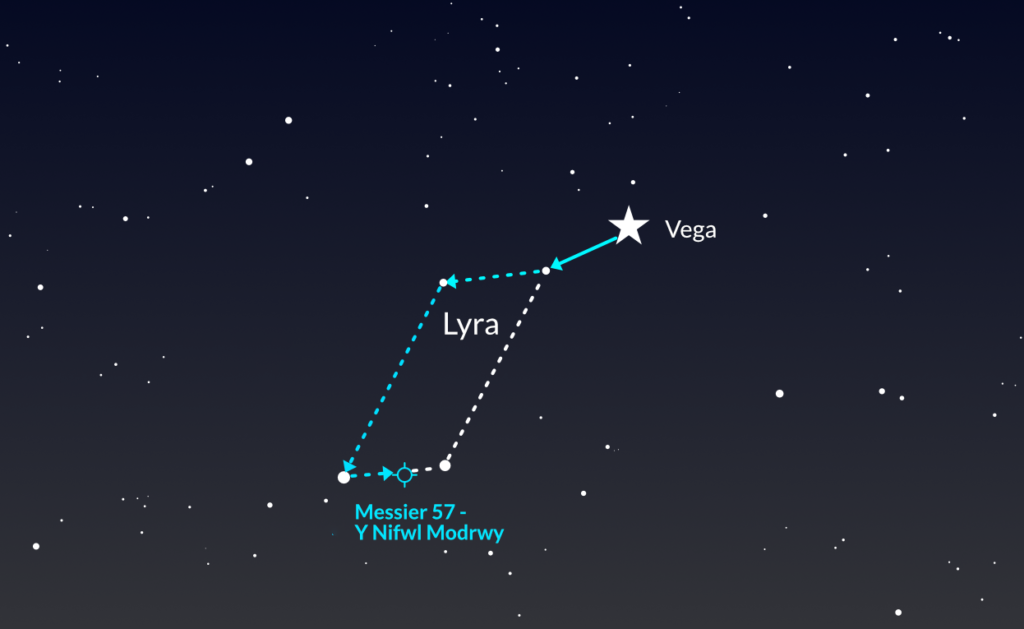
Chwiliwch am y seren Fega, sydd fwyaf disglair ar ben y cytser ac edrychwch am baralelogram hirgul gyda seren wrth bob cornel. Edrychwch am y ddwy seren ar y top a symudwch eich llygaid i’r ddau ar y gwaelod – mae Nifwl Modrwy wedi’i leoli ychydig dros y man hanner ffordd rhwng y ddwy seren yn y gornel waelod.
Fe fydd yn ymddangos fel hirgrwn gwyn bach yn eich telesgop. Mae’r Nifwl Modrwy yn nifwl blanedol, sy’n cynnwys haenau allanol seren sy’n marw. Mae’r braslun hwn, trwy ganiatad caredig Michael Vlasov o deepskywatch.com, yn dangos golygfa fras o Nifwl Modrwy fel y’i gwelir trwy delesgop 8 modfedd.
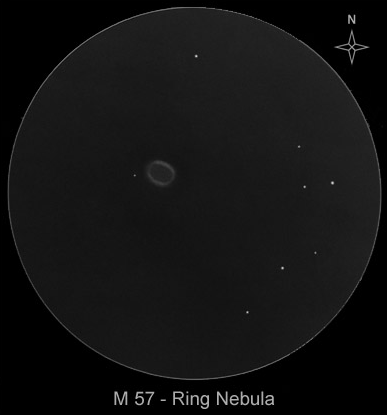
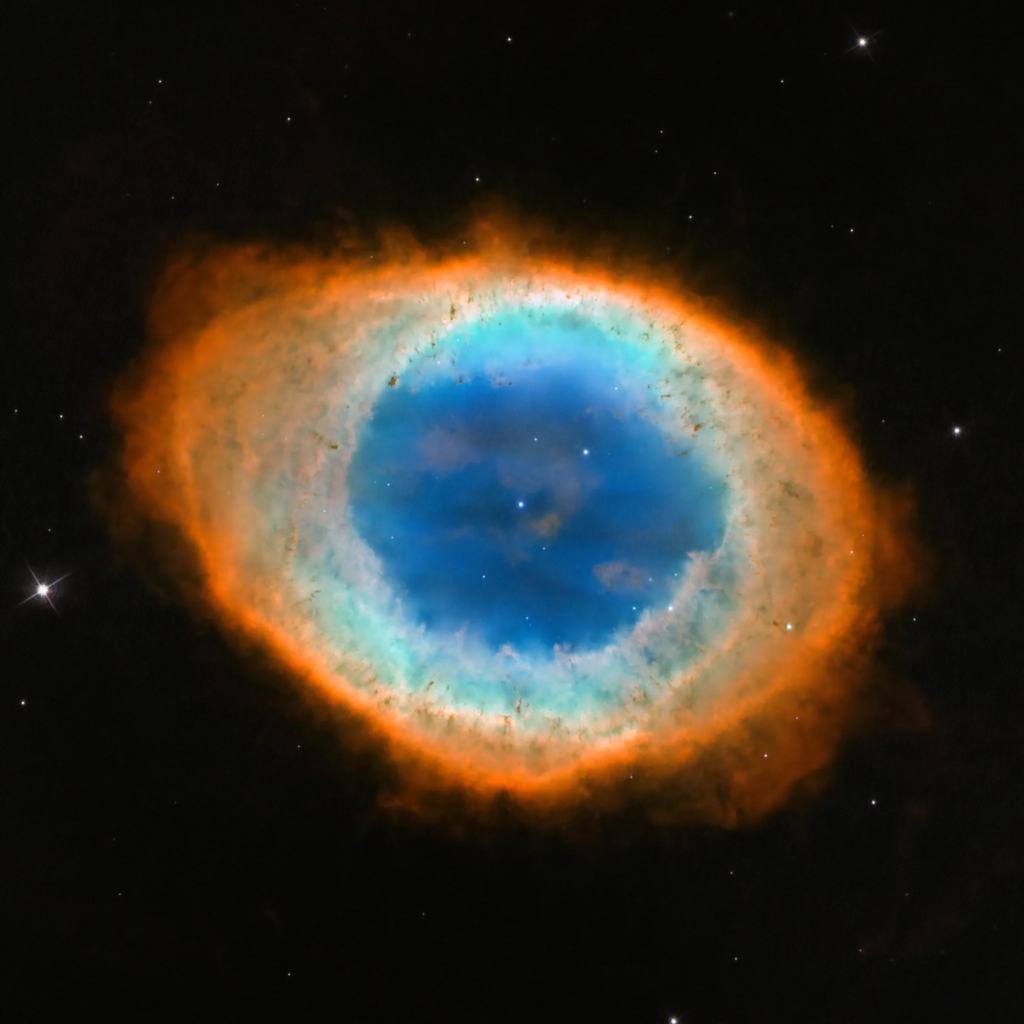
Edrychwch ar y seren sydd yng nghanol y nifwl hwn, a luniwyd gan NASA/ESA – rydych yn edrych ar graidd y seren sy’n marw, a adwaenir hefyd fel corrach gwyn. Ni fyddwch yn gallu gweld hwn trwy delesgop bach: mewn gwirionedd, fe fyddai angen telesgop anferth arnoch gydag agorfa o 16 modfedd neu’n uwch mewn wybren dywyll iawn. Mae ei adweithiau ymasaid wedi dod i ben, ar hyn rydych yn edrych arno yw’r egni gweddilliol yn oeri’n araf – ond dal yn eiriasboeth 100,000 Kelvins (99,727 gradd selsiws). Credir y gall y sêr hyn gymryd oddeutu biliwn o flynyddoedd i oeri.
‘Dychweliad’ y Llwybr Llaethog
Edrychwch i’r de wrth iddi ddechrau nosi ac edrychwch gyda llygaid noeth ar y gwrthych hyfryd yn ymddangos yn wybren y nos – fe fydd yn edrych fel band niwlog o olau, yn ymestyn o’r de ac yn fwa mawreddog uwch eich pen, sy’n cynnwys braich y Saethydd yn ein galaeth.
Delwedd gan Sean Gates

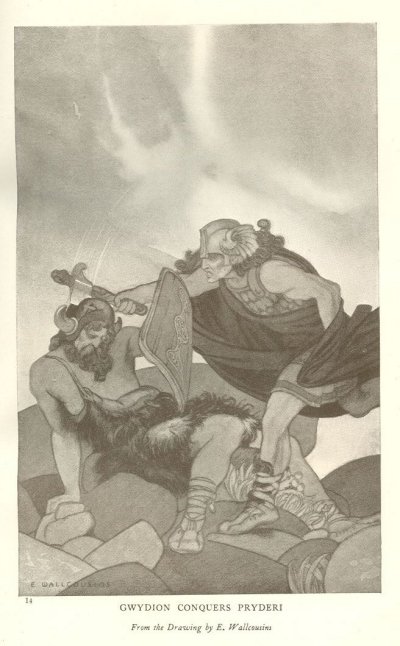
Mae nifer o chwedlau ynghylch hyn: yn ôl y llyfr Dark Land, Dark Skies (gan Martin Griffiths), mae’r Cymry yn rhoi’r Llwybr Llaethog fel afon nefolaidd a elwir Sarn Gwydion, sy’n cynrychioli’r ffordd y gwnaeth y dewin a’r arwr Gwydion deithio arno er mwyn achub enaid Lleu, ei nai, a’i ddychwelyd ef yn fyw.



